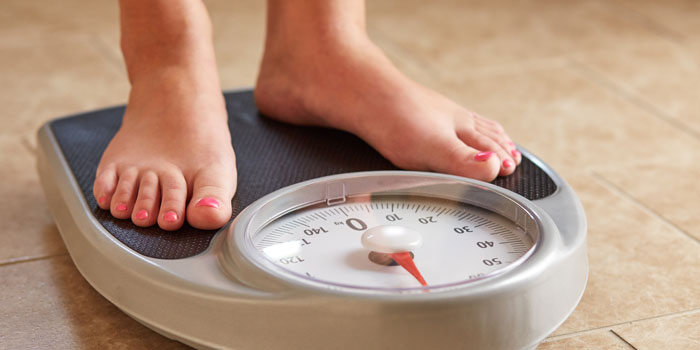
by adawes | Jan 24, 2023 | SprintSet Blog
How Being Healthy Affects mood and energy?
Living a healthy lifestyle can have an impact on a person’s energy levels and mood. The benefits of being healthy include:
Increased Energy Levels
Eating a nutritious diet and exercising regularly can both help increase energy levels. Eating a balanced diet can provide your body with enough calories and nutrients to fuel your activities, while physical activity can also help increase energy by delivering oxygen and nutrients to your body’s cells.
Better Moods
Living a healthy lifestyle can also lead to better moods. Eating a nutritious diet, staying hydrated, getting enough sleep, and engaging in physical activity can all help boost your mood. Additionally, properly managing stress in healthy ways and cultivating hobbies can both have a positive impact on mood.
Benefits of Being Healthy
Overall, living a healthy lifestyle can have many benefits. Below is a list of some of the advantages of being healthy:
- Increases Productivity – Having increased energy and improved moods can make it easier to be productive and focus throughout the day.
- Improves Self-Confidence – Making healthy choices for your body can also boost self-confidence.
- Reduces Stress – Properly managing stress through healthy methods can reduce its negative effects on your body.
- Increases Lifespan – Eating a nutritious diet and exercising regularly can increase lifespan.
In conclusion, living a healthy lifestyle can have many positive impacts on a person’s energy levels and mood. Eating a nutritious diet and exercising regularly can help increase energy and boost moods, while properly managing stress can help reduce its negative effects. All in all, living a healthy lifestyle can have many benefits, including improved productivity, self-confidence, and lifespan.

by Dan Yeager | Jul 15, 2019 | SprintSet Blog
If you think of a healthy lifestyle in terms of what it can do for you in the near future, you’re not alone. It takes a mindset of trust and delayed gratification to bank on the long-term advantages of living a healthy lifestyle.
Having a short-term goal isn’t necessarily a bad thing. Most of us have just enough vanity to want to look our best when seeing people we haven’t seen in years. So, that upcoming wedding or class reunion may be the swift kick in the behind needed to get you heading in the right direction.
But those baby steps need to be part of a habit-changing, lifetime journey. The advantages of living a healthy lifestyle come from sustained commitment, not from a rollercoaster approach to diet and exercise.
Short-term benefits of cleaning up your lifestyle include desirables like shedding unwanted pounds, gaining muscle mass and having more energy. And enjoying your new glow and more fit physique will boost your self-esteem, which will inspire you to stay on-track.
The long-term advantages of living a healthy lifestyle aren’t always so visible. But they should be anchored in your mindset regarding your health and habits. You may have immediate goals in mind, but you could actually set yourself up for long-term problems if you embark on a pattern of weight cycling.
Yo-yo dieting can lead to increased weight and fat gain over time. It can also speed up muscle loss and put you at higher risk of cardiovascular problems, fatty liver and diabetes. The advantages of living a healthy lifestyle essentially lose their edge each time you cycle up and down in weight.
By committing to a proven program of healthful eating and regular exercise, you open yourself to a new (and longer) life of health benefits.
Something as simple as adding fruits and vegetables as a main staple to your diet can reduce your risk of several diseases and chronic conditions. Because they are nutrient-dense and low in calories, fruits and vegetables will help maintain a healthy weight. And when the fat pounds come off, the risk of metabolic syndrome and the diseases in its wake decrease.
Why is this issue of weight so important? Because so many health risk factors cluster together. They occur in unison, their combined effects lead to predictable diseases, and they respond similarly to lifestyle modification.
And what is the most visible sign that this catastrophic cluster is going on beneath the surface? Abdominal (or visceral) fat.
One of the most obvious advantages of living a healthy lifestyle is slimming down your midsection. When that organ-weaving fat melts away, so does much of your risk for heart attacks, cardiovascular disease, stroke, diabetes, and some cancers.
Not sure what to aim for on the scale and tape measure? Read here for some guidelines to help you understand the relationship between your weight, waist, and health risks.
Whether you are on or off the “healthy lifestyle bandwagon,” everything you do (or don’t do) has a carry-over effect. When your weight becomes more manageable, for example, your joints get a reprieve. And when your joints aren’t aching, you enjoy exercising more. And more exercise equals more fat lost, more muscle gained, and higher bone density. It also strengthens your heart and increases your lung capacity.
And don’t forget about all the mental and emotional advantages of living a healthy lifestyle. Instead of cortisol rushing through your vessels, your body is drinking up endorphins produced from regular exercise. You feel better, sleep better and think more clearly. You also decrease your chance of getting depression, or can better manage it if you suffer from it.
One of the most impressive advantages of living a healthy lifestyle is the decreased likelihood of suffering memory loss and dementia. It’s easy to think of Alzheimer’s and other forms of dementia as being limited to the very old in their final years of life. But dementia develops slowly over many stages. Living a healthy lifestyle now can help preserve a healthy life later.
Reaping the long-term advantages of living a healthy lifestyle requires that healthy living be a habit. And habits develop over time with commitment, planning and support.
With the motivation of both a healthier life and a longer life to inspire you, isn’t now the perfect time to start a new habit?

by Dan Yeager | Jul 10, 2019 | SprintSet Blog
By now, the symptoms of metabolic syndrome are part of most Americans’ health conversations. Approximately 29% of Americans have high blood pressure and 33% have high triglycerides. And most are familiar with the relationship between obesity and other risk factors. But how often do those conversations go the next step to the consequences of metabolic syndrome if it’s left unchecked?
It’s worth a reminder here that metabolic syndrome isn’t a disease, but a group of risk factors that increase your risk of several diseases. Five risk factors are considered when diagnosing metabolic syndrome. And only three need to be present for a positive diagnosis.
- high blood pressure
- high fasting triglycerides
- low HDL cholesterol
- high fasting blood glucose (insulin resistance)
- abdominal obesity
Specific values for these risk factors can be found here.
Other factors that can increase your risk of metabolic syndrome include:
- age (risk increases with age)
- gender (men are at greater risk)
- family history of metabolic syndrome and its components
- family history of premature cardiovascular disease, diabetes and smoking
- insufficient exercise or sedentary lifestyle
- diagnosis of polycystic ovary syndrome (women)
- post-menopausal status (women)
The significance of clustering the five risk factors is that they are interrelated in their causes, pathophysiology, and responsiveness to medication and lifestyle modifications. And it is the interplay of these factors that is most predictive of the potential consequences of metabolic syndrome.
At the root of metabolic syndrome is insulin resistance, which is hinted at in rising blood glucose levels.
Abdominal obesity, or visceral fat, is the most obvious clue to metabolic syndrome. Again, the risk factors tend to cluster, and visceral fat, which wraps around the abdominal organs, causes insulin resistance.
In fact, adipose tissue in obese people is itself insulin resistant, causing a further sequence of metabolic and inflammatory problems.

by Dan Yeager | Jul 5, 2019 | SprintSet Blog
If you’ve ever wondered how to determine your ideal body weight, you’re not alone. It’s no secret that most of us give more than a passing glance to couteured mannequins and half-naked models.
The concept of ideal body weight (IBW) is shaped, in large part, by social perception of what is both desirable and acceptable. A 2012 Gallup Poll showed that Americans’ self-reported actual and ideal weights steadily increased since Gallup first started collecting the information in 1990.
What’s the significance of the finding? Americans are getting heavier. They are also adjusting their perception of “normal.” And their “ideal weights” are rising alongside their actual weights.
It’s as if they know they need to lose some weight, but their realization of just how much hasn’t expanded as much as their waistlines have. So they choose an “ideal” that is always within reach of where they are.
The problem is that nearly 160 million Americans — 75% of men and 60% of women — are overweight or obese. And they are basing their idea of “normal” on what they see, not on what is actually healthy.
If you asked your doctor how to determine your ideal body weight, what do you suppose she would tell you? Do you think it would be a straight-forward, reliable formula? Or do you think she would address the question with a more holistic approach that isn’t so to-the-point?
Interestingly, ideal body weight was originally introduced to estimate dosages for medical use. It had nothing to do with a person’s appearance at a given weight, even though that is what most of us think of. Metabolism of certain drugs is based more on ideal body weight than total body weight, so formulas were derived accordingly.
Four factors affect the most commonly used formulas for ideal body weight:
- age
- gender
- height
- body frame size (determined by wrist circumference in relation to height)
Several of the early popular formulas include:
- Hamwi (1964)
- Devine (1974)
- Robinson (1983)
- Miller (1983)
All formulas for ideal body weight have a format that starts with a base weight. Using the Devine formula, which is the most common, 100 lb is standard for women. A specific increment (5 lb for women) is then added for each inch over 5’, with a 1-10% adjustment for body type and other factors.
Specifically, the Devine formula is:
- For men: 50 kg + 2.3 kg/in over 5’
- For women: 45.5 kg + 2.3 kg/in over 5’
Another metric that is commonly used as a general indicator of healthy weight and potential health risks is body mass index (BMI). The formula for BMI is weight (in kilograms) divided by the square of height (in meters). The World Health Organization recommends a BMI of 18.5-25.
While your BMI may not directly tell you how to determine your ideal body weight, it is the official metric for the classification of different obesity levels. Given that your height is the known variable, you can work backwards to at least determine a weight that will keep you within the recommended BMI range.
By now you may be noticing that something is missing from all these formulas for ideal body weight. None of them take into account body composition (lean weight vs. fat weight). Any of these formulas could classify a bodybuilder or athlete as “overweight.”
Instead of worrying about how to determine your ideal body weight from a formula, shift your focus to health and happiness. Think back to when you felt your healthiest and happiest and were eating well without starving yourself, and make that your goal.
The concept of ideal body weight is an imperfect one and is not indicative of health.
Go back to what you think your doctor would say if you asked how to determine your ideal body weight. Hopefully she would assess your need to lose weight, give you a range to start with, then reevaluate on a periodic basis.
More importantly, she would hopefully remind you that it is more important to make healthy life choices and follow a monitored program of nutrition and exercise.
Ideal body weight is about so much more than a number on the scale. It has to reflect a doable, sustainable lifestyle with a focus on setting your health up to sustain you for the long haul.

by Dan Yeager | Jul 5, 2019 | SprintSet Blog
You probably know how to live healthy. So much of the lifestyle is common sense. But would you know how to start living healthy after years of turning a blind eye to your health?
Some things, like genetics and age, you obviously can’t control. Most things regarding your health, however, you can. And the first step to learning how to live healthy is realizing the importance of those things within your control.
Your day-to-day choices can make all the difference between living a long, energy-filled life and trying to stay one step ahead of chronic disease.
If you have reached the point of “enough is enough” and are wondering how to start living healthy in a doable, sustainable way, read on. It’s never too late to make a change for the better.
In order to know where you need to go, you need to know where you are. Establish a baseline so you can track your progress and focus on areas that may have more serious implications for your health.
Yes, this means approaching reality fearlessly. But choosing not to look at the truth won’t make it go away. So get out your wellness journal, enter today’s date, and get ready to document a great story of living healthy.
Here are a few measurements you will want to document at the start of your journey and regularly thereafter:
- Your weight and waist circumference.
Your body mass index (BMI), which relates your weight to your height, can give clues to your level of body fat and risks for diseases like type 2 diabetes. A healthy range for BMI is 8.5-24.9, and for waist measurements is no more than 40” for men and 35” for women.
Even if your annual physical is a few months off, you can always request a blood panel to get your starting values for cholesterol, triglycerides and fasting blood glucose. Document all your numbers every time you have a blood panel done, and include the breakdown of cholesterol into its components (HDL, LDL, VLDL), as well as your cholesterol risk ratio.
If you don’t have a blood pressure cuff or machine at home, you can check your blood pressure at most pharmacies and fitness centers.
Once you have your baseline measurements, it’s time to learn how to start living healthy. Here are some general guidelines that are completely doable and effective without being overwhelming. Remember, your goal is a lifestyle shift for lifetime health.
Set yourself up to succeed by setting attainable goals and breaking the big steps down into tiny ones. I can do anything for 30 minutes. I can give up alcohol for one month. I can walk every morning for one week.
- Focus on one change at a time.
You may have dreams of running a marathon, learning to meditate and becoming vegan. But going from 0 to 26.2 at the same time you are becoming a transcendental vegan will only lead to defeat.
What’s the easiest thing for you to focus on today? This week? This month? Is it eliminating processed foods from your diet? Then get into a new eating routine until it feels habitual. Is it rekindling a favorite exercise routine? Then focus on that until it’s part of your natural rhythm, and progress from there.
Write or speak the commitment to yourself and one or two people who will support you.
- Add fruits and vegetables to your diet.
Give your immune system a boost from the vitamins and antioxidants, and your digestive and circulatory systems a cleaning spree from the fiber. Shoot for five to nine servings a day.
- Hydrate, hydrate, hydrate!
Water not only cleanses the blood of toxins, it’s essential for normal cellular function and fat metabolism. Water will also help curb those pesky cravings if you drink a glassful before eating. The benefits of water are plentiful, so aim for at least 80 oz. a day.
The American Heart Association recommends 150 minutes of moderate-intensity exercise per week or one hour at least three times per week. Wondering how much you should be exercising based on your age? Here are some guidelines. And don’t forget the importance of weight-bearing exercise to maintain muscle mass and bone density.
Wanting to live healthy is an important awareness. Committing to live healthy is an essential first step. Having an actual plan for how to start living healthy is what gets you off the starting blocks and keeps you on track for long-term success.
Look for a plan that treats you as the unique person you are and customizes your steps accordingly.
The process of losing weight and living healthy is more than just physical. It’s emotional, social, and even spiritual, as well. An effective plan will address all those components and offer you ongoing support for the long-term.
It’s never too late to learn how to start living healthy. And there’s no better time than this very moment to remind yourself that you’re worth the effort.

by Dan Yeager | Jul 1, 2019 | SprintSet Blog
If there’s one thing most of us have in common, it’s the need and effort to shed some pounds. When you look at the mind-boggling numbers for people who are overweight or obese, it’s no wonder Americans always seem to be struggling to lose weight.
We may not be aware of all the risks attached to being overweight, but we know we’re pushing the envelope when we push the numbers on the scale. And yet, most of us have the toughest time making a commitment to our health. And many of those who make it out of the gate at full speed still end up struggling to lose weight.
Why is that?
It’s important to realize that weight loss isn’t just a numbers game. It’s not even just a physical game. It’s also a mental and emotional game. And that piece of the puzzle — the “head” component — is a game-changer.
That’s why, in the SprintSet Energizing Weight Loss System, we consider the whole person. We teach you how to cleanse and heal your body and how to eat for a lifetime. Just as importantly, we teach you how to embrace the discovery of your healthiest self by meeting emotional eating and self-sabotage head-on. After all, when you are struggling to lose weight, you can be your own worst enemy.
So, what helpful tidbits of information can you put into your toolkit to help you come out the victor when you’re struggling to lose weight? Here are 5 essentials to keep in mind:
- Your reasons for losing weight matter.
This is all about your “why.” It’s the difference between being pushed to the starting line by external motivation and social status, and marching yourself to the line because you’re after something deeper.
Sure, most of us can recall more than a few times we have caught an unpleasant view of ourselves in the mirror. And that dissatisfaction, along with our favorite jeans sitting in a lonely corner of the closet, can be enough to make us say, “Enough!”
But what’s going to keep you going when the scale doesn’t seem to be onboard with your intentions? And what’s going to make you adopt your new behaviors for a lifetime?
The difference between weight loss for today and weight loss for life lies right at the core of you.
- Your approach to weight loss matters.
If you are embarking on a weight-loss program because of a rude awakening in the mirror, you may be inclined to reach for a quick-fix program that promises to help you shed the pounds rapidly if you will only do xyz.
But if you aren’t following a program that you actually enjoy, guess what? You will have a line of temptations out the door, offering you every palatable and easy reason to throw in the towel.
Weight loss is dependent on both nutrition and activity, so finding a sustainable program with components you enjoy will make all the difference in success.
- Long-term vision matters.
If you are checking days off the calendar so you can “get back to normal,” your mind isn’t in the game.
A temporary mindset leads to deprivation. Sure, anyone can give up every forbidden temptation for a while, but that approach only leads to cravings and hunger. Instead of just withholding what isn’t good, you end up depriving your body of what is essential.
When your body becomes confident that it can count on you to provide it with all it needs, it will allow you to stop struggling to lose weight.
- Hormones have their own agenda.
Two hormones in particular come into play during weight loss. Leptin, which signals satiety, decreases during weight loss. And ghrelin, which increases hunger, increases. And those shifts can continue long after the pounds have come off.
This is why pacing yourself is so important. Anything more than one to two pounds a week can mess with your metabolism and lead to muscle loss.
- Aerobic and strength-building exercise are important.
Muscle keeps the furnace burning, so don’t skip out on the weights because you’re afraid the scale won’t go down. Resistance work will help you burn the fat more quickly.
If you are struggling to lose weight, remember that it’s your whole self that is in the game. You are, in essence, an athlete in this unique effort. You have to show up physically, mentally and emotionally.
But you certainly don’t have to show up alone.






